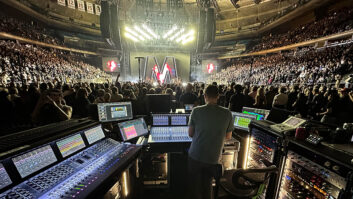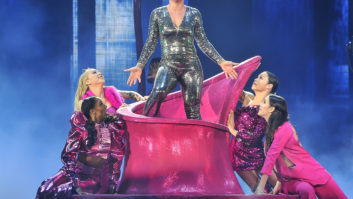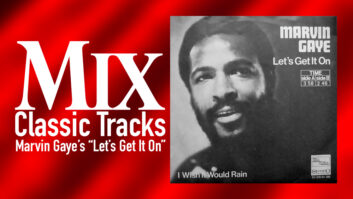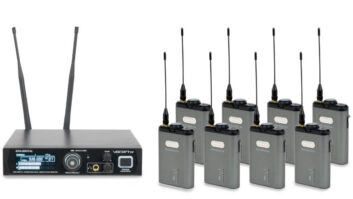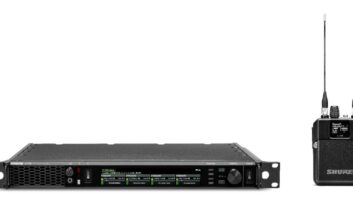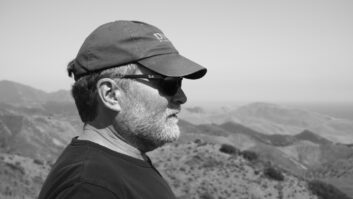Depeche Mode returns to the U.S. this month on its Global Spirit tour. We asked the group’s monitor engineer of almost two decades, Sarne Thorogood, how the job and gear has changed over time.
For years, the band has relied on a traditional stage setup, using a monitor system including audio tools, such as the Midas XL8 control center, Turbosound 450 bi-amped two-way floor monitor, L-Acoustic Arcs Line Source, Sennheiser EW 300 IEM G3 live microphones and Shure microphones. Then, in 2009, before heading into Depeche Mode’s Tour of the Universe, we decided to try something new with Ultimate Ears Pro in-ear monitors. While on tour, [lead singer] Dave Gahan began to experiment with UE 7 Pro in-ear monitors and using the on-stage combination of in-ear monitors, floor wedges and side fill setup, without the pressure of having to rely solely on one method of stage monitoring.
Jumping ahead to our 2013 Delta Machine tour, we we decided the band was ready for an in-ear monitor upgrade. We transitioned the band from UE 7 Pro to UE 11 Pro, and Dave made his full in-ear monitor on-stage debut. While he kept his familiar eight-wedge setup, we reduced the side fills to subwoofers only and even that small change made a quite a difference in the band’s audio performance. Now, a few years later on the current 2016-2017 Global Spirit Tour, Dave has upgraded again and is rocking UE 18+ PRO in-ear monitors, which he loves for the smooth response.
Deciding what in-ear monitors work best for the band isn’t always a simple process, as it comes down to personal preference. While Dave has his unique setup, other members of the band, such as Peter Gordeno, have found that a combination of in-ear monitors and on-stage wedges is what works best for them during performances. And, as a monitor engineer, I personally prefer UE Pro 7 as a starting platform. I find these monitor to be simple and efficient, with an edge that many artists who have spent time with wedges tend to prefer. In addition to personal preferences evolving, transitioning the band from UE 7 Pro, to UE 11 Pro and now to UE 18+ PRO has also been an effort to keep up with the progress the audio industry has made, in order to ultimately offer Depeche Mode the best on-stage audio options.
At any point during a performance, I run about 20 mixes, comprised of a combination of mono and stereo in-ear mixes and wedges for the band, four effects sends, delay and reverb for Dave and reverbs for drums, plus mixes for the backline techs. And, the single thing that has made a difference in creating reliable and consistent performances over the years has been our switch to in-ear monitors. Not only do I have more confidence that a show will run smoothly since transitioning to in-ear monitors, but the monitors also protect Dave’s voice and ears, so Depeche Mode can continue to tour and put on great performances for their fans over the next 20 or more years.
Ultimate Ears
pro.ultimateears.com
Britannia Row
britanniarow.com
